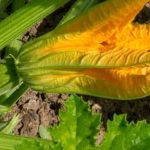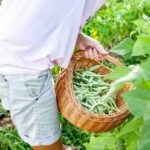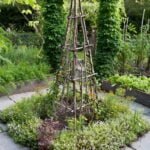Are you interested in vegetable gardening in Southwest South Dakota? The unique climate and growing conditions in this region present both challenges and opportunities for aspiring gardeners. With the importance of self-sustainability and food security on the rise, many individuals are turning to vegetable gardening as a means of providing fresh produce for themselves and their families.
Southwest South Dakota offers a distinct set of environmental factors that impact vegetable gardening. From temperature fluctuations to soil quality, gardeners must carefully select the right vegetables and employ specific techniques to ensure successful growth. Understanding these factors is crucial for anyone looking to cultivate a thriving vegetable garden in this area.
In this article, we will explore the best vegetable varieties for Southwest South Dakota, offer tips for selecting resilient vegetables, discuss the importance of soil preparation, and provide insight into planting, maintenance, and extending the growing season. Additionally, we will address common challenges faced by gardeners in the region and offer strategies for overcoming them. Whether you’re a beginner or experienced gardener, this comprehensive guide aims to support your vegetable gardening journey in Southwest South Dakota.
Choosing the Right Vegetables for Southwest South Dakota
When it comes to vegetable gardening in Southwest South Dakota, choosing the right vegetables is crucial for a successful harvest. The unique climate and growing conditions in the region require gardeners to be selective in their choice of vegetable varieties. Here are some tips for selecting the best vegetables that thrive in the regional climate and are resilient to temperature fluctuations:
- Consider cold-hardy vegetables: Due to the short growing season and occasional late frosts, it’s important to choose cold-hardy vegetables that can withstand cooler temperatures. Some excellent cold-hardy options include kale, spinach, carrots, radishes, and peas.
- Opt for drought-tolerant varieties: Southwest South Dakota experiences dry and arid conditions, so it’s advisable to select vegetables that are tolerant of drought. Drought-resistant vegetables like tomatoes, peppers, eggplants, and beans are good choices for this region.
- Choose early-maturing crops: With a relatively short growing season, it’s beneficial to plant early-maturing vegetable varieties that can reach maturity before the first frost. Examples of early-maturing crops suitable for Southwest South Dakota include lettuce, arugula, cucumbers, and zucchini.
By carefully considering these factors and selecting the right vegetable varieties, gardeners in Southwest South Dakota can increase their chances of a bountiful harvest despite the challenging climate. Additionally, seeking out locally-adapted seed varieties from nearby garden centers or nurseries can also enhance the success of vegetable gardening in this region.
Understanding the specific needs of each type of vegetable is essential for successful cultivation in Southwest South Dakota. Taking into account factors such as cold-hardiness, drought tolerance, and maturation period can greatly contribute to a thriving vegetable garden in this unique climatic environment. Gardeners who make informed choices when selecting their vegetable varieties will ultimately reap the rewards with a productive and fruitful harvest.
Preparing the Soil for Vegetable Gardening
Importance of Soil Preparation in Southwest South Dakota
In a region like Southwest South Dakota, where the climate can be harsh and unforgiving, proper soil preparation is crucial for successful vegetable gardening. The area’s soil is often sandy and lacks organic matter, making it challenging to grow healthy plants. By improving soil quality through proper preparation, gardeners can provide their vegetables with the necessary nutrients and support for optimal growth.
Tips for Improving Soil Quality and Fertility
One of the first steps in preparing the soil for vegetable gardening in Southwest South Dakota is to conduct a soil test. This will help determine the pH levels and nutrient content of the soil, allowing gardeners to make informed decisions about amendments. Adding organic matter such as compost or well-rotted manure can help improve soil structure and fertility. Additionally, incorporating cover crops during the off-season can enhance soil health by reducing erosion and adding organic material.
Ensuring Successful Vegetable Growth
By ensuring that the soil is properly prepared, vegetable gardeners in Southwest South Dakota can set themselves up for success. Well-nourished plants are better able to withstand environmental stressors and have improved resistance to pests and diseases. Through thoughtful soil preparation, gardeners can create an environment where their vegetables can thrive despite the challenging growing conditions in the region.
Planting and Maintenance Tips for Vegetable Gardeners
Once you have chosen the right vegetables for your garden in Southwest South Dakota, it’s time to focus on planting and maintenance. The unique climate of the region presents specific challenges for gardeners, but with the right approach, a successful vegetable garden is definitely achievable.
When planting your vegetables, it’s important to pay attention to the timing. Southwest South Dakota has a short growing season with frost potential extending into late spring and early fall. It’s essential to wait until after the last expected frost date before planting tender crops like tomatoes and peppers.
Additionally, using season extenders such as row covers or cold frames can help protect plants from unexpected frosts. Proper watering is also crucial in this arid region, so make sure to provide consistent moisture to your vegetables while avoiding waterlogged soil.
Maintaining a healthy vegetable garden in Southwest South Dakota involves regular care and attention. Fertilizing your plants with compost or organic fertilizers will help replenish nutrients in the soil, promoting strong growth and improving overall plant health.
Keep an eye out for common pests such as aphids, cutworms, and cabbage loopers that may pose a threat to your vegetable crops. Using natural pest control methods like beneficial insects or homemade organic sprays can help manage these pesky intruders without resorting to harmful chemicals.
By being mindful of proper planting timing, providing adequate water, nourishing the soil, and implementing pest control measures, vegetable gardening in Southwest South Dakota can be a rewarding experience. With dedication and adherence to best practices for this specific region, you can enjoy a bountiful harvest of fresh, homegrown produce throughout the growing season.
Dealing With the Challenges of Vegetable Gardening in the Area
Vegetable gardening in Southwest South Dakota presents its own set of challenges due to the region’s unique climate and growing conditions. One of the most significant challenges for gardeners in this area is the extreme weather conditions, including hot summers and cold winters.
These temperature fluctuations can be detrimental to certain vegetable crops, making it crucial for gardeners to select resilient varieties that can withstand these conditions. Additionally, pests such as grasshoppers, cutworms, and aphids can pose a threat to vegetable plants in this region.
To overcome these challenges, Southwest South Dakota gardeners can implement various strategies. For instance, using row covers and other physical barriers can help protect vegetables from pests while also providing some protection against temperature extremes. Additionally, integrating companion planting techniques can help deter pests and promote overall plant health in the garden. It’s also important for gardeners to monitor weather forecasts closely and take proactive measures such as providing shade during hot spells or covering plants during frosts.
Furthermore, seeking guidance from local agricultural extension services or joining gardening clubs in the area can provide valuable support and knowledge sharing among vegetable gardeners facing similar challenges. By sharing experiences and best practices with other local gardeners, individuals can gain insights into effective pest control methods, weather management techniques, and other strategies specific to vegetable gardening in Southwest South Dakota.
| Challenges | Strategies |
|---|---|
| Extreme Weather Conditions | Using row covers and companion planting techniques; monitoring weather forecasts closely; seeking advice from local agricultural extension services. |
| Pests | Implementing physical barriers; adopting companion planting techniques; joining local gardening clubs for knowledge sharing. |
Extending the Growing Season in Southwest South Dakota
Vegetable gardening in Southwest South Dakota can be challenging due to the region’s short growing season and unpredictable weather. However, there are several techniques that can help gardeners extend their growing season and increase their harvests. One effective method is the use of season extenders such as cold frames, row covers, and hoop houses. These structures provide protection from frost and allow gardeners to start planting earlier in the spring and continue harvesting later into the fall.
Another technique for extending the growing season in Southwest South Dakota is through cold weather gardening methods. This involves choosing cold-hardy vegetable varieties that can withstand low temperatures and even some exposure to frost. Some examples of cold-hardy vegetables that thrive in the region include kale, spinach, carrots, and radishes. Additionally, using mulch to insulate the soil can help prevent it from freezing too early in the fall, allowing for an extended harvest.
Lastly, utilizing succession planting can help maximize the growing season in Southwest South Dakota. Succession planting involves planting new rounds of crops throughout the season to ensure a continuous harvest rather than just one big harvest at the end. This practice can be particularly beneficial for fast-maturing vegetables like lettuce and radishes.
| Technique | Benefits |
|---|---|
| Season Extenders | Protection from frost, early planting, and late harvesting |
| Cold Weather Gardening Methods | Use of cold-hardy vegetable varieties and mulch insulation for extended harvests |
| Succession Planting | Continuous harvest throughout the season rather than a single big harvest |
Harvesting and Preserving Vegetables From the Southwest South Dakota Garden
When it comes to vegetable gardening in Southwest South Dakota, timing is everything when harvesting your crops. It’s important to pick your vegetables at the peak of their ripeness to ensure the best flavor and nutritional content.
For example, tomatoes should be harvested when they are fully colored and slightly soft to the touch, while leafy greens like lettuce and spinach are best picked when they are young and tender. Additionally, harvesting regularly encourages more production from many vegetable plants, so be sure to check your garden often for ripe produce.
Preserving the Harvest Through Canning, Freezing, and Drying
One of the joys of vegetable gardening is being able to enjoy your homegrown produce long after the growing season has ended. In Southwest South Dakota, where the winters can be harsh and growing seasons short, preserving your harvest is essential. Canning is a popular method for preserving vegetables like tomatoes, green beans, and peppers in Southwest South Dakota.
Freezing is another effective way to preserve vegetables from your garden – simply blanch your veggies before freezing to maintain their quality. And if you’re looking for a more space-efficient method of preservation, consider drying certain vegetables like herbs or hot peppers.
Seeking Advice on Harvesting and Preserving Vegetables
If you’re new to vegetable gardening in Southwest South Dakota or just looking to improve your harvesting and preserving skills, there are plenty of resources available for assistance. Local gardening clubs and community gardens often host workshops on food preservation techniques such as canning and freezing. Additionally, reaching out to experienced gardeners in the area can provide valuable insight into what methods work best for preserving specific vegetables in this unique climate.
Whether you’re enjoying fresh-picked veggies from your own garden or savoring preserved flavors during the winter months, harvesting and preserving your homegrown bounty brings immeasurable satisfaction to any Southwest South Dakota gardener. With careful timing, proper techniques, and community support available for guidance, sustaining a bountiful harvest throughout the year is an achievable goal for vegetable gardeners in this region.
Community Resources and Support for Vegetable Gardeners
In conclusion, vegetable gardening in Southwest South Dakota offers a unique set of challenges and rewards. The region’s climate and growing conditions may be challenging, but with the right knowledge and resources, it is possible to create a successful and productive vegetable garden. As an essential part of self-sustainability and food security, vegetable gardening in this area provides an opportunity for individuals and communities to take control of their food supply.
Choosing the right vegetables that are resilient to the region’s temperature fluctuations is crucial for Southwest South Dakota gardeners. The importance of soil preparation cannot be overstated, as it sets the foundation for successful vegetable growth. Additionally, understanding proper planting and maintenance techniques, as well as strategies for dealing with common challenges such as extreme weather conditions and pests, is vital for a thriving vegetable garden in this area.
Furthermore, seeking out community resources and support can greatly benefit vegetable gardeners in Southwest South Dakota. Local gardening clubs, seed exchanges, and community gardens provide valuable opportunities for learning and sharing experiences with other like-minded individuals.
These supportive resources offer advice, assistance, and a sense of community that can further enhance the vegetable gardening experience in the region. Overall, through dedication, knowledge-sharing, and access to community support systems, vegetable gardening in Southwest South Dakota can be a fulfilling and rewarding endeavor.

If you’re looking to get into vegetable gardening, or are just looking for some tips on how to make your current garden better, then you’ve come to the right place! My name is Ethel and I have been gardening for years. In this blog, I’m going to share with you some of my best tips on how to create a successful vegetable garden.





